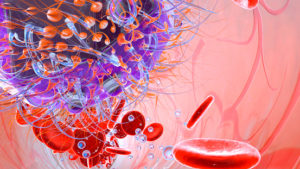Pathogen reduction technology (PRT) is now commonly used to inactivate many types of pathogens in platelets and plasma. PRT for whole blood or RBCs, however, is not as well developed due to the fragility and absorption characteristics of RBCs. In order to investigate the safely and effectiveness of RBCs from PRT treated whole blood, researchers followed pediatric patients (median age, 3.1) with various cancers for 30 days after transfusion with either ɣ-irradiated RBCs (N=35) or RBCs from PRT treated whole blood (riboflavin and UV light) (N=35). Increases in hemoglobin concentration were similar in both groups. All transfusion associated adverse events were mild and rates were the same in both groups (5.7%). PRT may be a suitable alternative to ɣ-irradiation for ensuring RBCs are safe for those at risk for transfusion-associated graft-vs-host disease. Larger studies are needed to further ensure the safety and clinical effectiveness of PRT-treated RBCs.
Reference:

